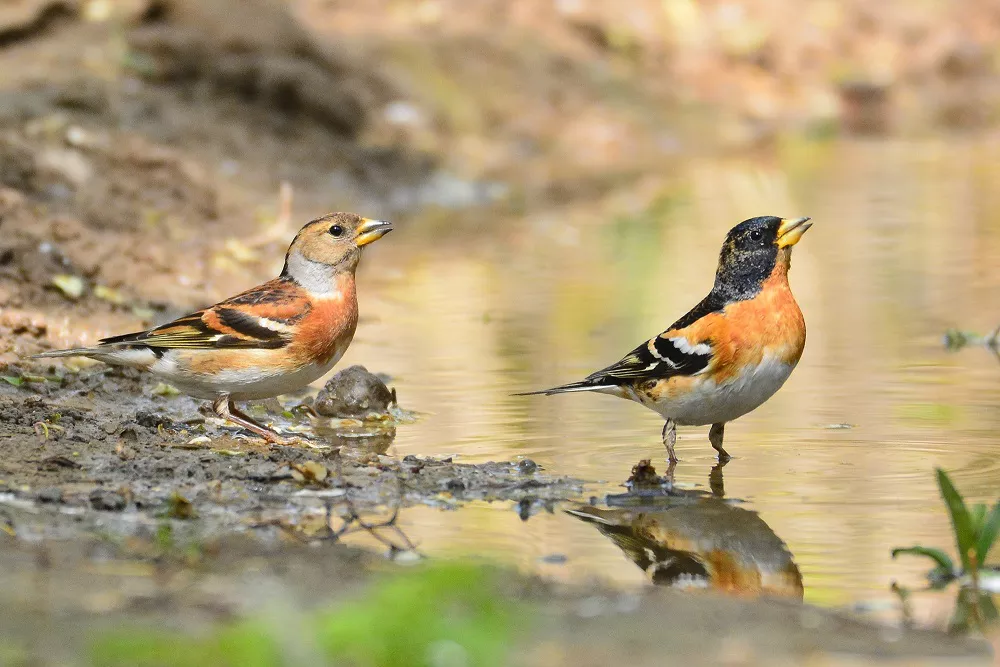The Brambling, scientific name Fringilla montifringilla, is a small passerine bird found in Europe and Asia. It belongs to the Finch family and is closely related to the Chaffinch. Bramblings are migratory birds, breeding in the boreal forests of Scandinavia and Russia, and wintering in large flocks across Western Europe, the Middle East, and Asia.
- Appearance:
Bramblings are small birds, measuring around 13-14 cm in length and weighing about 20-25 g. They have a compact body, short neck, and a small head with a conical bill. The male Brambling is easily recognizable by its striking breeding plumage. It has a bright orange breast and shoulders, with a black head and white belly. The black head extends down to a distinctive white patch on the nape. The wings and tail are mostly black with white and yellow wing-bars, and the rump is white. The male Brambling’s winter plumage is duller, with brown and buff feathers replacing the bright orange.
The female Brambling, on the other hand, is less showy but equally attractive in her own way. She has a brownish-grey head and back, with buff underparts and a prominent white eye-stripe. The wings and tail are similar to the male but lack the bright colors. The female’s winter plumage is similar to the male’s but less vividly colored.
- Behavior:
Bramblings are social birds and are often seen in large flocks during the winter months. They forage on the ground for seeds, berries, and insects, and are known to visit bird feeders in gardens and parks. During the breeding season, Bramblings are solitary or form pairs and build their nests in trees or shrubs. They lay 4-5 eggs and incubate them for around 12-14 days. The young fledge after 12-15 days and are fed by their parents for another week or so.
- Distribution:
Bramblings breed in the boreal forests of Scandinavia and Russia, and migrate south to wintering grounds across Western Europe, the Middle East, and Asia. In Europe, they are commonly found in the UK, Germany, Scandinavia, and the Baltic States. In Asia, they occur in Japan, China, and Korea.
- Conservation:
Bramblings are classified as Least Concern by the International Union for Conservation of Nature (IUCN) due to their wide range and stable populations. However, like many other migratory bird species, Bramblings face threats from habitat loss and climate change. Conservation efforts include protecting breeding and wintering habitats, reducing hunting pressure, and promoting sustainable land use practices.
In conclusion, the Brambling is a small but striking bird with distinctive breeding plumage. Its bright colors, combined with its social behavior and migratory habits, make it a popular sight for birdwatchers across its range.


 Facebook
Facebook  Instagram
Instagram  Youtube
Youtube 